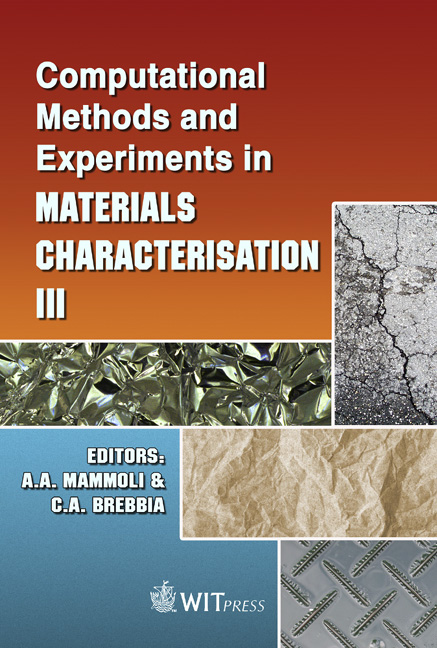Quantitative Assessment Of Strain And Heat Treatment On Twin Formation In Commercially Pure Nickel
Price
Free (open access)
Transaction
Volume
57
Pages
10
Published
2007
Size
473 kb
Paper DOI
10.2495/MC070111
Copyright
WIT Press
Author(s)
Q. Li, J. R. Cahoon & N. L. Richards
Abstract
Thermomechanical treatment comprising cold working to 6% strain followed by annealing at temperatures in the range 700 oC to 1000 oC greatly increases the fraction of special boundaries, primarily Σ3 type. The accompanying generation of annealing twins is analysed using the accident growth model due to Gleiter and the phenomenological model of Pande et al. It is shown that Gleiter’s model, which contains no scaling factors, when used correctly, predicts the twin density in Cu alloys and pure nickel. The model due to Pande et al also predicts the twin density in Ni but this model incorporates two scaling factors that detract from its generality. Keywords: special grain boundaries, annealing twins, copper alloys, nickel. 1 Introduction It has been long accepted that thermomechanical treatments can alter the size, shape and crystallographic orientation of grains. In 1984, Watanabe [1] proposed that the type of grain boundaries present could also be controlled sand thus the concept of \“grain boundary engineering” was initiated. Grain boundary engineering has been used to increase the fraction of \“special grain boundaries”, usually defined in terms of coincidence lattice site (CSL) boundaries. A high fraction of low Σ CSL boundaries {Σ (≤ 29)} has been shown to improve resistance to intergranular crack propagation in Inconel 600 [2, 3] and to substantially improve the elevated temperature crack growth resistance of a nickel-based superalloy [4]. For type 304 stainless steel and alloy 600, high
Keywords
special grain boundaries, annealing twins, copper alloys, nickel.





